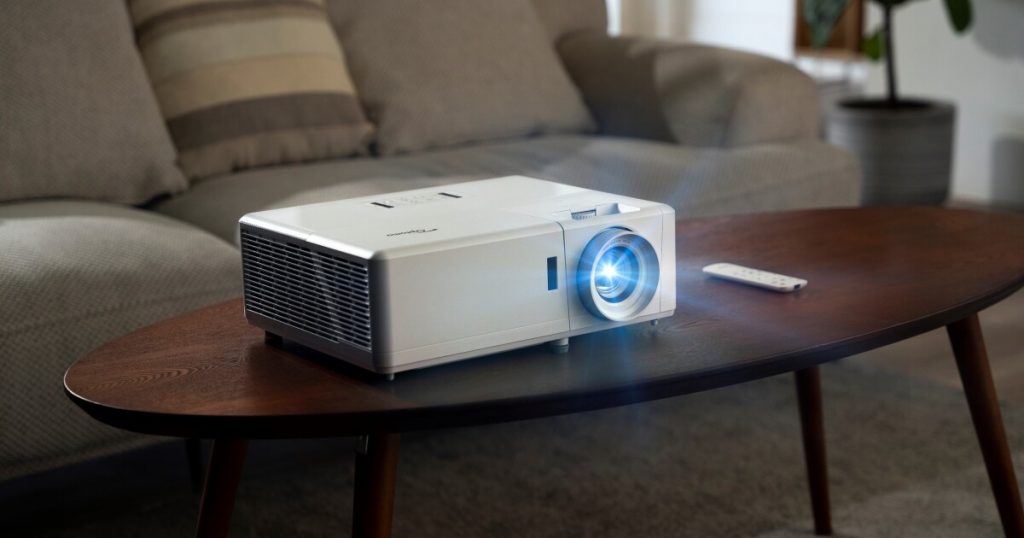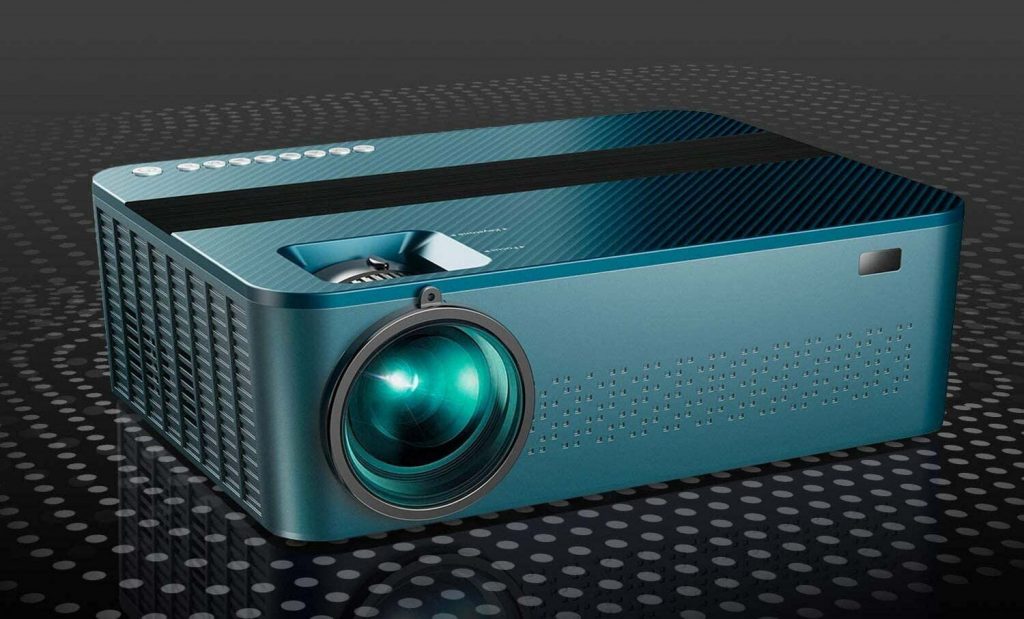If you are one of those people who have purchased a DLP projector for their home cinema, office, or school, you might be wondering how does a DLP projector work. As a person with quite a bit of knowledge of projectors, I decided to create this article to say a word or two about these types of devices, as they are essential equipment for any streaming requirements.
Even though there are a lot of new technologies on the market, the DLP models are still one of the most popular and commonly used ones, even though apart from being cheap and easy-to-use options, they also come with a few disadvantages.
So in the next section, I will explain the DLP projector functions and whether it is a good option for everyday use.

How Does a DLP Projector Work
Digital Light Processing (DLP) projectors are the oldest projector technology created using tiny rotating mirrors rotating towards and away from the light, processing over 35 million colors, causing a rainbow effect which is impressively much more than what a human eye can grasp.
This is the most simple way to explain it, so if you want to know more about how does a DLP projector work, I will elaborate on this topic further in the next section.
The mechanism of DLP projectors explained
More advanced technology than the human eye
I will explain this as simply as I can, so DLP projectors are, in fact, pretty impressive technology. They are created with millions of tiny mirrors, and as they rotate and tilt towards or away the light, reflecting shapes in a wide range of color specters. Every mirror works individually to project a high-resolution image; more precisely, one mirror represents one pixel.
Normally the DLP projectors are created to only produce black and white images; however, manufacturers integrate color wheels containing blue, red, and green colors to emit exact color shades. What this means is that when the mirrors reflect blue and red colors at once, they project a purple color.
Finally, what happens is that the brain naturally puts all the images together into a full-color picture.
Producing cinematic quality images
Nowadays, many cinemas have replaced LCD technology with DLP for film projections. Since I’ve been working with DLP projectors for quite a while, I have noticed that the DLP technology has improved quite a bit over the past few years in terms of image quality and sharpness.
One of the most important aspects when it comes to projections is to have high contrast. Since DLP projectors use a single chip to create the color, and because of the persistence of the vision, this top-notch technique can deliver cinematic-quality images.
Read more: How to Watch TV on Projector Without Cable Box

Sealed DMD chip to shield the dust particles from the cooling air
Probably one of the biggest advantages that DLP projectors have is the fact that they come with a DMD chip that acts as a shield to keep the dust particles flying around in the air. With this in mind, making them very safe for both school and home environments.
DMD is known to be much more durable, offering image uniformity and high light accuracy.
That also means that with this type of projector, there is no need to spend money on maintenance and additional cleaning, even though I personally would still consider doing a cleanup every once in a while.
Possibility of different eyes seeing different images
As I mentioned earlier, the mirror wheel emits over a million colors at a glance, allowing the brain to put them into a multi-color image, so the problem with this is that different people can perceive different images.
This is because the brain naturally processes rapid sequences of these colors, making it not very pleasing to watch. Surprisingly, this is a common problem with the human brain seeing different projections, especially where the black and white color meet.
Suitable option for home entertainment
I would like to say that DLP technology is a good addition to home entertainment as it’s a very handy image screening unit mainly because it offers good quality contrast and brightness if you like to use it as an outdoor cinema. Another benefit is that it can be used in offices and educational establishments.
Compared to the other products, it has a much longer lifespan and produces shake-free images since its light source is replaceable.
Handy and portable design
DLP technology comes in handy designs that are easy to carry with you and move from one place to another. They are usually small in size, so they can easily fit anywhere without needing additional equipment to connect them to laptops, smartphones, tablets, and TVs.
Also read: What Kind Of Projectors Do Movie Theaters Use?
Types of DLP projectors and how they work
What you need to know about DLP projectors is that there are two versions: a one-chip and a three-chip version. They work in different mechanisms providing completely different image experiences.
I will explain this aspect more precisely in the subsection below.
Single-chip version
The single-chip technology uses a color wheel with red, green, and blue segments that rotate in front of the light source, creating an illusion of a full-color range image.
What I want to say with an illusion is that these sequences rotate too fast, the brain is interested in them as a single image, and the original colors are often not perceived by the viewer.
Compared to the three-chip version, the single-chip DLP projector’s drawback is that they project darker and a little bit bland images.
Three-chip version
The three-chip technology modulates three colors, red, blue, and green, illuminating the screen and simultaneously producing much brighter and more colorful pictures.
The three-chip DLP projectors can withstand much brighter ambient room lighting and don’t cause a rainbow effect like the single-chip version because they use a chip for every single color.
These projectors are also commonly used in cinemas that stream 3D movies, as they are also available in 4K.